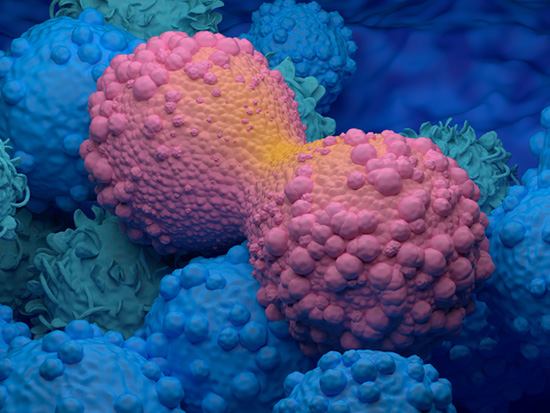 In 2022, there were 2.3 million women diagnosed with breast cancer and 670,000 deaths worldwide, according to the World Health Organization.A recent study from cancer researchers at the University of Alabama at Birmingham and Georgia State University has identified a new therapeutic target in quadruple-negative breast cancer, or QNBC, one of the deadliest and most aggressive treatment-resistant forms of breast cancer.
In 2022, there were 2.3 million women diagnosed with breast cancer and 670,000 deaths worldwide, according to the World Health Organization.A recent study from cancer researchers at the University of Alabama at Birmingham and Georgia State University has identified a new therapeutic target in quadruple-negative breast cancer, or QNBC, one of the deadliest and most aggressive treatment-resistant forms of breast cancer.
In 2022, there were 2.3 million women diagnosed with breast cancer and 670,000 deaths worldwide, according to the World Health Organization. QNBC is a particularly aggressive and understudied subtype. While triple-negative breast cancer lacks expression of estrogen receptor, progesterone receptor and HER2, QNBC is a subset that also lacks the androgen receptor. This absence of all four major receptors leaves patients with QNBC with no targeted treatment options and poor response to standard therapies, highlighting a critical unmet clinical need.
The study “C/EBPβ increases tumor aggressiveness by enhancing KIFC1 expression in androgen receptor negative triple negative breast cancer,” published in the Journal of Cell Communication and Signaling, revealed that the protein KIFC1 is a key driver of cancer cell growth and metastasis in QNBC. They found that the protein C/EBPβ becomes hyperactive in tumors lacking the androgen receptor, which unleashes KIFC1 to fuel cancer progression.
“QNBC remains one of the most intractable subtypes of breast cancer due to its lack of molecular targets,” said Ritu Aneja, Ph.D., associate dean of Research and Innovation, UAB School of Health Professions and senior author of the study. “By identifying the C/EBPβ-KIFC1 signaling cascade as a central driver of tumor aggressiveness, we uncover a novel vulnerability while providing a rational foundation for precision-targeted therapy in a setting of critical clinical need.”
In addition, the researchers demonstrated that CW069, a highly selective inhibitor of KIFC1, inhibits QNBC cell growth and migration in both lab and animal models while leaving healthy cells unharmed.
“This study validates KIFC1 as a druggable vulnerability, which is exciting because QNBC has been a relentless challenge with limited therapies and devastating outcomes,” said Chakravarthy Garlapati, Ph.D., a senior scientist at Alkermes and the co-first and co-corresponding author of the study. “Our identification of KIFC1 as a key driver of QNBC cell growth and metastasis offers a desperately needed target to develop new treatments that could save lives.”
“Our work defines a previously unrecognized signaling pathway that fuels QNBC pathogenesis,” said Shriya Joshi, Ph.D., scientist at Bristol Myers Squibb and co-first author of the study. “By targeting this axis, we can selectively disrupt tumor growth mechanisms without harming healthy cells, an essential step toward more precise and less toxic therapies.”
Building on these findings, the team is now investigating combination therapies that pair CW069 with existing chemotherapy drugs, aiming to overcome resistance and improve survival.
“This research marks a pivotal step toward personalized medicine for women with QNBC,” Aneja said. “Our mission is to advance these promising insights into clinical trials and ultimately offer new hope to patients with this aggressive disease.”
This work was supported by a grant from the National Cancer Institutes of Health (grant number R01CA239120).